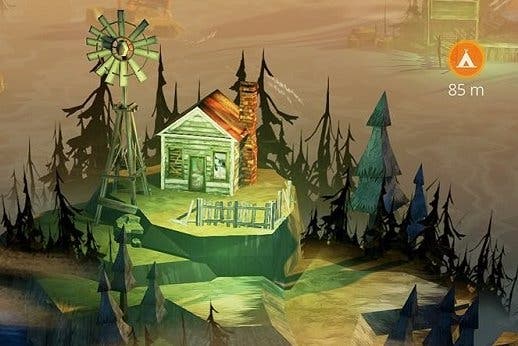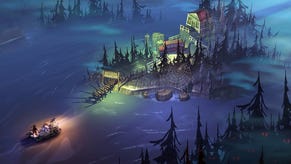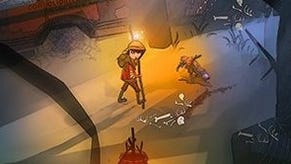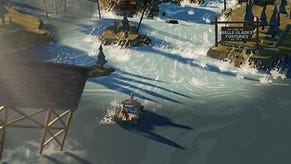The Flame in the Flood review
Scouting for buoys.
Learning the river used to be a big deal. It's most of what a pilot did, I think, although pilot may be the wrong word in a trade that had a lot of idiosyncratic terminologies. Regardless: you learned the river, and a lot of what you learned about was underwater and invisible. With lines and weights and poles, the riverboat crew came to understand every inch of the stuff that lay beneath the surface - branches they could snag themselves on, rocks that would be their undoing or that might snarl up the currents in problematic ways. The river was always changing, too: every few months, you had to learn it all over again. The river was alive, and you had to remember that it was alive, because it could kill you using all of its hidden tricks and arcana.
I love the river in The Flame in the Flood, a pretty survivalist rogue-lite from a start-up filled with the typical industry luminaries. But I can see why others might not be so keen. On forums and in comments sections, the same things come up over and over. The river is brutal, and the raft you use to navigate it doesn't control very well - at least not before a few upgrades. Yet this is a survival game at heart, and things that don't work very well are to be expected.
The Flame in the Flood is a fairly traditional survival game on land, as it happens: scavenge and craft your way from weakness to fleeting strength as you explore this ragged chunk of downhome, post-apocalyptic, post-Katrina Americana that's delivered in watery greys and greens with sudden bursts of orange or throbbing blues. The levee has not held and the stuff of humanity has turned to rust and rot. Manage a handful of problems, covering hunger, thirst, temperature and the need for sleep, and fight off wild animals who are as spindly-limbed and desperate as you are, cartoonish and angular and not to be messed with. But the spars of land you explore are fairly small, and they're scattered. They're scattered along the river, and the river is a whole other beast.
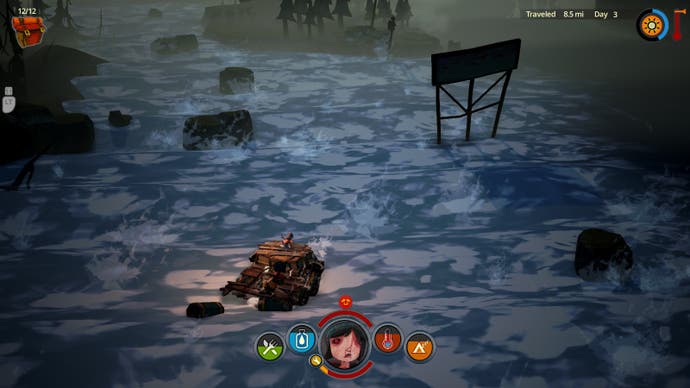
It's brilliant, really: a survival game where you're actually going somewhere. Where there's no house to build and no farmland to grind. Each procedurally-offered patch of land in The Flame in the Flood is finite, with resources that will not replenish, and opportunities that you might not see again. Your job is to make the most of it and know when to move on. Gather berries and crops to make food and rope and medicine, gather flint to make basic tools. Use the fire to get warm, use the shack to get a good night's sleep (and hopefully some bits and pieces for a raft upgrade), but then understand when it's time to leave.
Back on the river, the pace is very different. Your raft's steering is sluggish and weighty - at least before those upgrades - because the river is alive, and because as it bucks and lurches beneath you, it is expressing its own character, its own will regarding where it takes you. It's a fight, between you and the river, and with the river as an adversary, this becomes a game about missed opportunities. The river only ever flows one way, so what's behind you is lost for good. Ahead of you there are other problems, anyway. Rapids that allow you to cover ground more quickly, but will almost certainly see you bashing your hull away on rocks and floating cars and even the odd house that's been dragged along by the tides, Huck Finn-style. Currents, clearly visible as little chalk outlines on the oily surface of the water, that may pull you away from the things you need. And then there's temptation - lootable treasure spots scattered along the sharpest chunks of shoreline. Risk fighting the river for the chance to earn a few fishhooks? Or play it safe, only to come a-cropper later on when you don't have the kit you need?
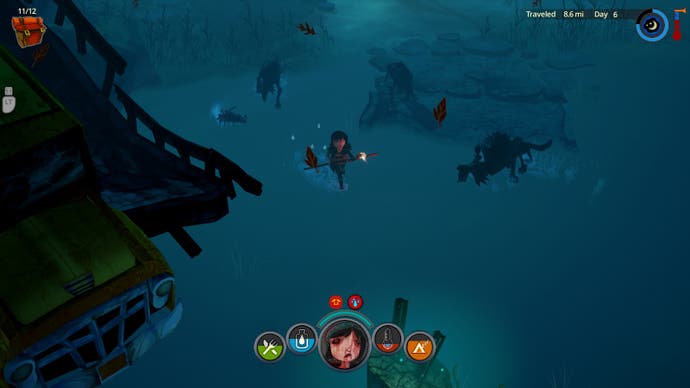
Coming a-cropper is always on the cards, of course. The Flame in the Flood's crafting system is fairly limited, but your backpack space is as well, so even though there aren't a great deal of tools at your disposal in the first place you're going to have to make some tricky choices regardless. As well as storing things in your backpack, you can keep them on the raft, or in the pack carried by your dog Aesop. Aesop sniffs out resources on land and provides a bit of ragged companionship, and he can perform a neat trick, too: every time you die, you get to salvage anything that he was carrying for the next run. It's a bit of kindness in an otherwise grim survival game, but it cuts both ways. When min-maxing kicks in, and given the savagery with which RNG can control your fate in this procedural wilderness, you can find yourself playing the dog rather than the river if you're not careful - and mining the odds is never as much fun as scavenging from one chunk of land to the next, even if it is a safer option.
Luckily there are other animals to keep you focussed - wolves and much worse who stalk you on land and can end a game with one laceration if you don't see to it in time. You can craft weapons to fight them, and you can try to scare them away, but it's often better to flee - to give up the territory to them, and hope that the next territory is a little kinder. So many ways to die! Hunger, thirst, cold, lack of sleep of course, but then poisoning, infection, and drowning out there on the river. Even when you don't drown a bump on the rocks can see the waters snatch away precious artefacts - a jar for collecting rain, a box for catching rabbits. Or you might just miss the landings you want - the churches, the camps - and have to risk forests, where the resources can be scarcer and the animals seem wilder.
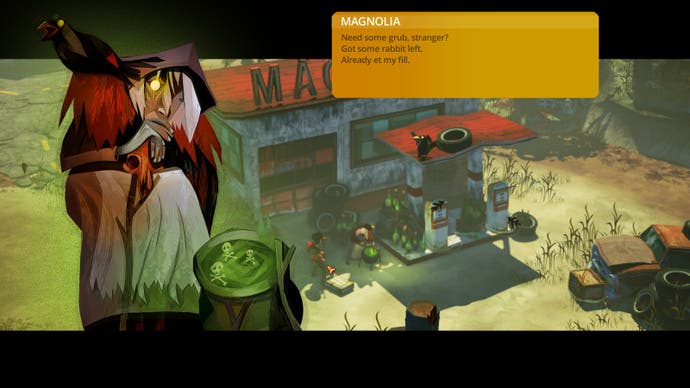
The Flame in the Flood is wonderfully scrappy in its art style, as your lugubrious scavenger picks between junk metal and flotsam, as the regions change from flooded shanties to towns where chunks of highway are suspended over rapids, schoolbuses tilted above the abyss. It's a little too scrappy elsewhere, however: crash-happy, particularly in campaign mode, and eager to load into blackness and require a restart on Xbox One. Sound effects drop away. Your dog can disappear while the backpack he is tugging remains visible.
Despite a decent spell in Early Access these problems remain, as does a campaign that doesn't offer quite enough of a temptation away from the endless mode, regardless of snatches of storytelling as you move further down river, and checkpoints to ease you to victory. Endless is where it's at, from the off: it feels right to be headed into a ceaselessly shifting future in a game like this, permadeath the only certainty. I like the idea that the river flows on and on as long as you can take it.
And still, you're going somewhere, even if you know that another somewhere lurks beyond that. This is what I love about The Flame in the Flood, and what makes up for its numerous quirks and idiosyncrasies and rough edges. It takes the survival game and leads it in its own direction. And what sights! At night, the warm orange glow of a camping spot tethered to the green or blue lights cast by its dock can be almost impossibly romantic. Suddenly, you can see why so many people spent so long learning the river, even when they knew the river was only going to change again once they thought they were safe.
